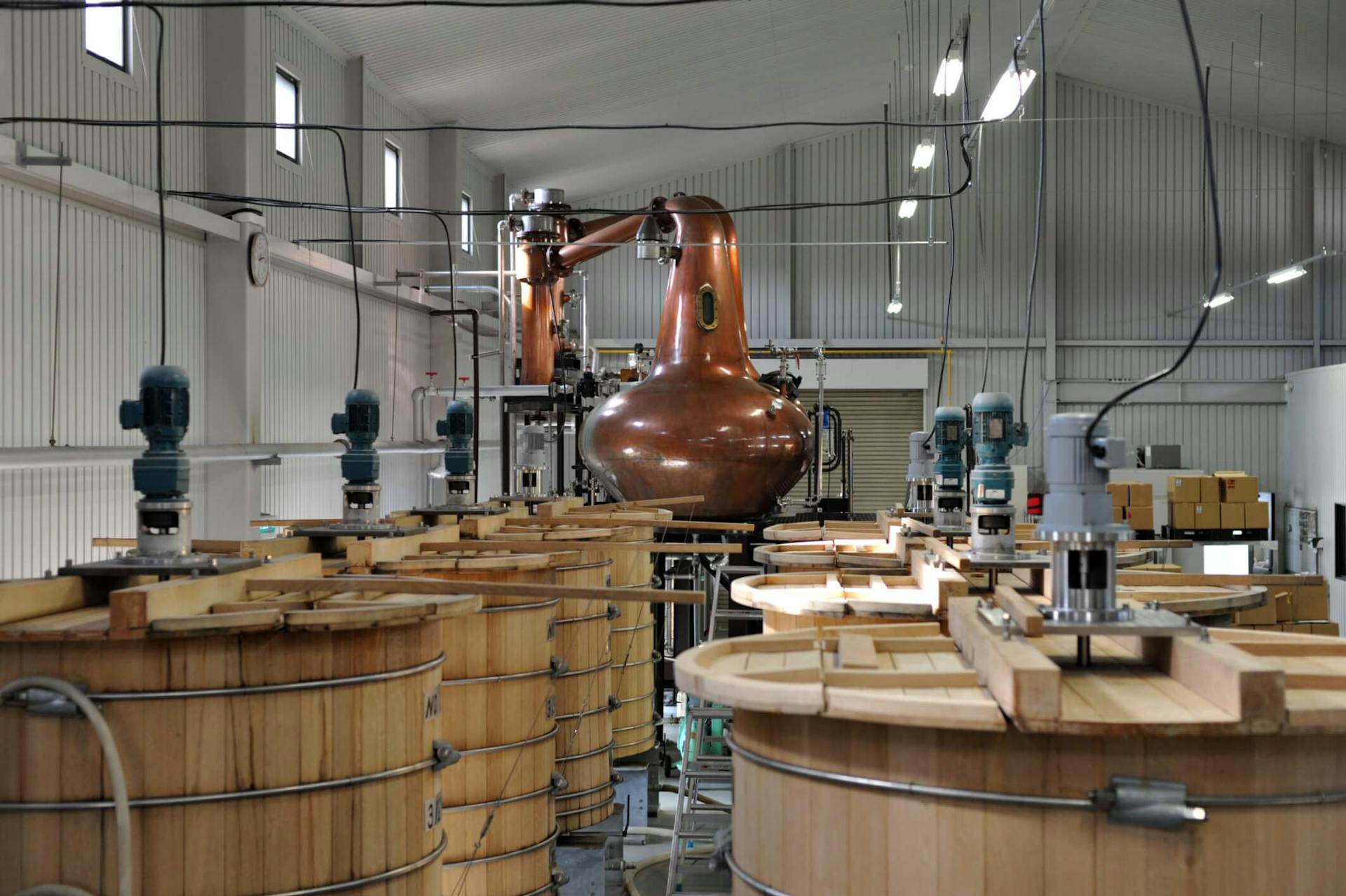
Whether you're a curious beginner or a connoisseur looking to deepen your knowledge, this article offers you the essential basics to understand and appreciate this spirit.
1. How is Single Malt Whisky made?
The production of whisky is an artisanal process rich in traditions, which can vary depending on the regions and distilleries, but generally follows several key stages.
The Malting Process
It all begins with the selection of the barley, which is soaked in water and then left to germinate.
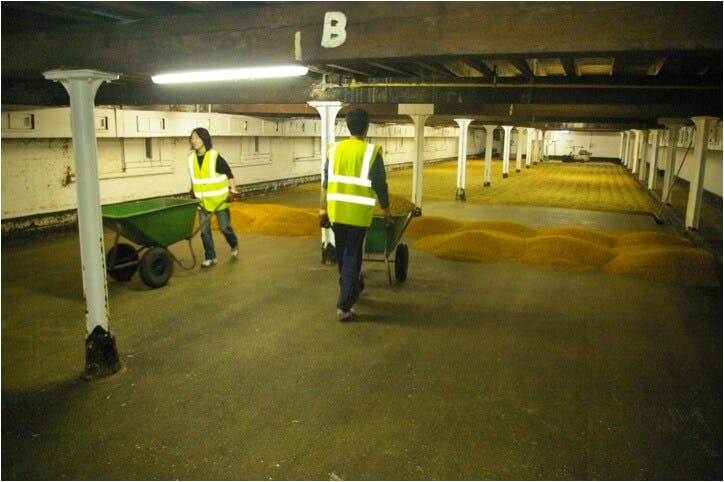
This germination process allows the conversion of starch into fermentable sugars. Once the barley has germinated enough, it is dried in a kiln, sometimes using peat, which gives the whisky its characteristic smoky flavor, especially in Islay whiskies.
The Mashing Process
The malted barley is then ground into a fine powder called "grist," which is mixed with hot water to extract the sugars. This mixture, known as "mash," is mashed and then slowly cooled.
The Fermentation Process
The mash is transferred into large vessels called washbacks, often made of stainless steel, but sometimes also of wood, where yeast is added.
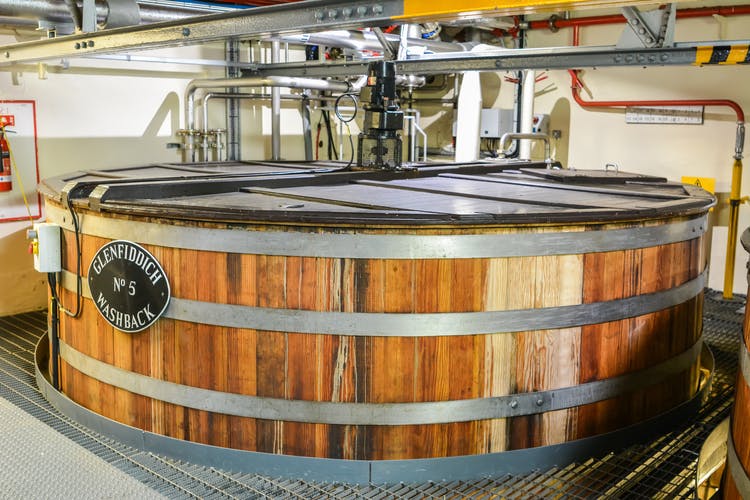
The yeast converts the sugars into alcohol and carbon dioxide, and this process typically takes two to three days, producing a liquid called "wash" with a low alcohol content.
The Distillation Process
The wash is then distilled, usually in two or sometimes three passes in copper pot stills. The first distillation takes place in a still called the "wash still" to concentrate the alcohol and separate the impurities.
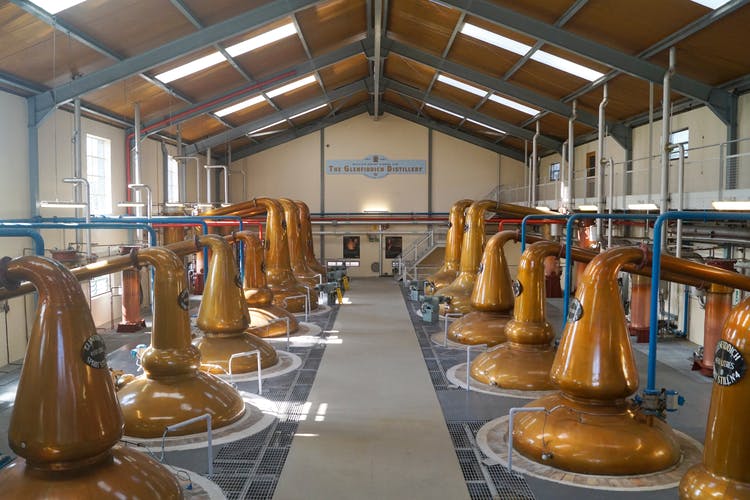
The resulting liquid, called "low wines", undergoes a second distillation in a "spirit still", where the distiller selects the middle fraction, called the "heart of the run", which is the part of the distillation considered to be of sufficient quality to become whisky.
The Aging Process
The distillate is then aged in oak casks, often casks that have previously contained sherry, bourbon, or other spirits, which contribute to the complexity of the whisky's flavors.
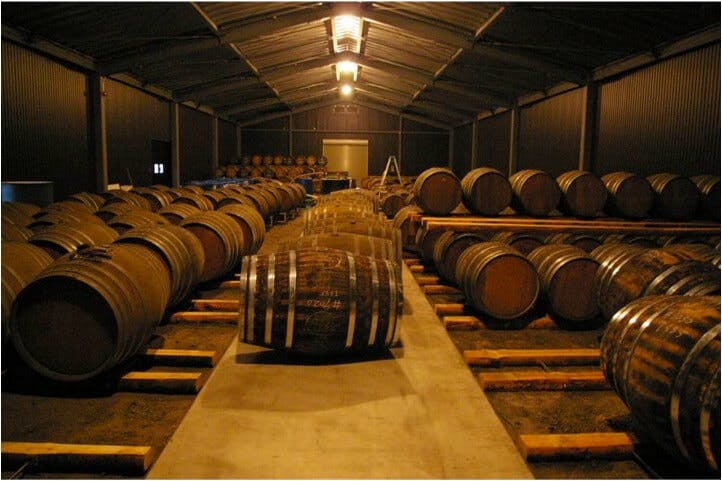
Whisky must be aged in casks for at least three years according to the regulations in the European Union. However, it is generally aged much longer to develop its full complexity. It's worth noting that this rule is specific to the EU and differs from other regulations, such as in the United States, where aging requirements vary depending on the type of whisky produced.
The Blending and Bottling Process
After aging, whiskies from different casks, and sometimes from different ages, are blended.
The liquid may be filtered and diluted with water to reach the desired alcohol content before bottling.
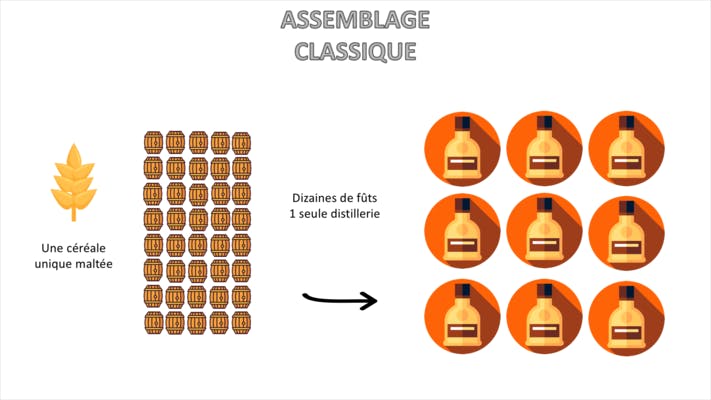
2. What are the main categories of whisky?
Scotch Whisky : Originating from Scotland, Scotch must be mashed, distilled, and aged in Scotland for at least three years in oak casks. Scotch whisky is also divided into several subcategories:
- Single Malt Whisky: Made from only malted barley, in a single distillery, and distilled in a traditional pot still.
- Single Grain Whisky: Can be made from grains other than barley, such as wheat or corn, and also produced in a single distillery. It is typically distilled continuously in a column still.
- Blended Malt Whisky: A blend of several single malts from different distilleries.
- Blended Grain Whisky: A blend of grain whiskies from different distilleries.
- Blended Whisky: A blend of malt and grain whiskies.
Irish Whiskey: Mashed, distilled, and aged in Ireland, Irish whiskey is generally distilled three times (compared to twice for Scotch). It can be made from malt, grain, or a blend of both, following the same categories as Scotch whisky: single malt, blended malt, single grain, blended grain, and blended whisky.
However, Ireland has a specific category: single pot still whiskey. This traditional style is made from at least 30% malted barley, 30% unmalted barley, and up to 5% other grains like oats or rye, giving it a rich, spicy texture.
American Whiskey: The most popular types include:
- Bourbon: Must be made in the United States, containing at least 51% corn, and aged in new charred oak barrels. These criteria also apply to other types of American whiskey, such as Tennessee whiskey, rye whiskey (at least 51% rye), or wheat whiskey (at least 51% wheat).
- Tennessee Whiskey: Similar to bourbon, it must be produced in Tennessee and undergo a specific filtration process before aging, called the Lincoln County Process. This step involves passing the distillate through maple charcoal, giving it a distinctive smoothness and roundness.
- Rye Whiskey: Made with a minimum of 51% rye, giving it a spicier and more floral flavor.
Canadian Whisky: This whisky is often called rye whisky in Canada, though it does not necessarily meet the rye percentage required to be labeled as rye whiskey in the United States. The whisky must be aged for at least three years.
Japanese Whisky: Created based on the model of Scotch whisky, Japanese whisky has gained popularity and recognition for its finesse and precision.
Japanese whisky stands out primarily through its iconic blends (such as Nikka from the Barrel, Super Nikka, Hibiki). Over time, Japanese distilleries have perfected the art of blending.
3. WHAT TO READ ON A WHISKY LABEL?
The label on a whisky contains a wealth of information, helping you make the best choice when purchasing: brand name, age, alcohol content, etc.
To use the name "whisky," producers must let it age for at least 3 years in casks. You won't find any younger whisky. In the case of blended whisky, the age mentioned on the label refers to the age of the youngest whisky used in the blend: a "15-year-old" bottle may contain whiskies aged 17 or even 21 years. As for alcohol content, while 40% is the minimum, a whisky can display up to 60% if it carries the label cask strength (meaning it has been bottled without dilution).
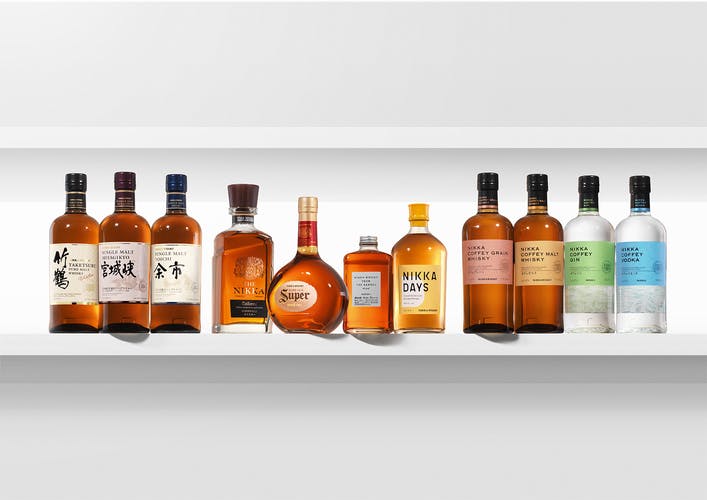
The denominations guarantee the origin of the whisky: only whiskies that are born, distilled, aged, and bottled in Scotland can bear the label "Scotch Whisky."
For single malts, the brand name typically corresponds to the distillery name, and you may sometimes find the region (Highlands, Speyside, Islay, etc. for Scotland) as well as the distillation and/or bottling dates on the label.
The information is even more comprehensive for single cask whiskies or bottles from independent bottlers, whose series are often numbered and very limited. The labels typically also indicate the type of cask used for aging and its number.
4. What is a Blend?
A Blended Whisky is made by blending two types of whiskies: single malt and grain whiskies. The latter are distilled in column stills, producing a lighter and more accessible style, which serves as the base for the blend, with different single malts adding character.
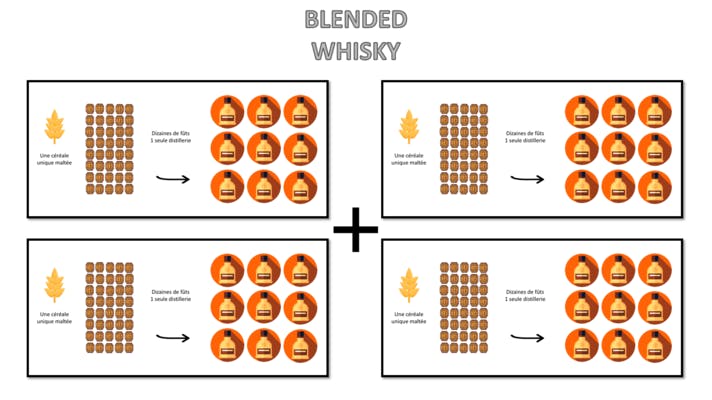
While blends are generally marketed under large international brands with very high volumes, there are also blends recognized for their quality that do not need to hide behind the often more renowned single malts.
The expertise of the master blenders, who create recipes harmonizing the aromas, plays a crucial role in defining the identity of a whisky.
To create a blend, multiple casks can be combined and bottled immediately, or they can be left to age together for several additional months, a method known as "marrying casks."
The trend of the 1960s has resurfaced, and La Maison du Whisky, anticipating consumer desires, has managed to preserve collector editions that reflect the era when blends were highly esteemed.
5. What are the typical aromas of whisky?
Whiskies can present a wide range of aromas. Before even attempting to identify the type of aroma you are experiencing, it is essential to first categorize it.
Several categories of aromas can be distinguished:
The proper perception of whisky aromas is developed with experience. Over time, by smelling and tasting different whiskies, the brain learns to associate certain aromas, such as the woody or pastry notes, which are commonly found in many whiskies.
If you wish to deepen your knowledge of whisky tasting, we have written an article outlining all the essential steps. To go further, our tasting initiation academies offer an immersive experience, perfect for exploring the world of whisky and refining your palate.
6. Is whisky drunk on the rocks or not?
The way to drink whisky can vary depending on personal preferences and traditions. Generally, there are a few common options for savoring whisky.
Many purists prefer to drink their whisky neat, meaning without any additions, in order to fully appreciate the complex aromas and flavors of the distillate.
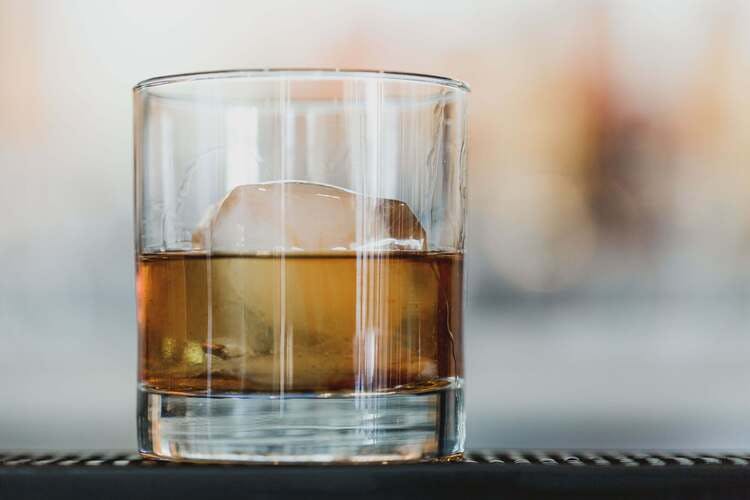
In other cases, adding ice to whisky can, in addition to lowering the temperature, slightly dilute the drink, making the whisky more accessible. Generally, the ideal way to maximize tasting and sensory exploration is to enjoy it neat or with a splash of water, to fully reveal its aromas. However, adding ice can perfectly fit into a more relaxed tasting, where in-depth analysis of the whisky is not the main objective.
7. What are the effects of water in whisky?
The dilution of whisky does not only affect the alcohol content in the glass. Water influences the composition of the whisky more profoundly, whether it is its alcohol level, texture, or aromas.
Indeed, while a splash of water softens any harshness, it is important to remember that water also acts as a revelator for the aromas.
In fact, adding just a few drops of water to the glass can intensify the aromas and, in a way, facilitate the olfactory analysis.
8. What water should you add to your whisky?
It is important to carefully choose the type of water you add to your whisky, as not all waters are equal. There is a wide variety of waters with different physicochemical parameters, especially in terms of pH and mineral content.
Hard waters, like those commonly found in Europe, are particularly rich in potassium and magnesium, which can alter the aromatic balance of the whisky. Opting for low-mineral water helps preserve the harmony and complexity of the spirit.
In fact, tap water is often unsuitable for mixing with whisky, as it may have a too pronounced taste that could alter the quality of the whisky.

Similarly, most mineral waters are not recommended, as, although we are used to them, they have distinct and often pronounced tastes.
It is entirely possible to obtain a suitable water, with low levels of total dissolved solids that could neutralize the flavor. Cristalline® will work perfectly for this purpose.
9. How does the type of cask influence the taste of the whisky?
The slow aging of whiskies and certain spirits is often carried out in oak casks.
Casks are distinguished between new casks and used casks. New casks undergo various treatments before use, such as charring, a more or less intense burning of the inside of the cask aimed at concentrating the aromatic compounds of the oak on the surface.
These casks leave a stronger mark on the spirit, as their reserves of tannins and other aromatic elements remain intact. In contrast, used casks, which have already released some of their compounds, allow the distillate to express itself more, offering a more subtle and balanced profile.
Whether first or second fill, used casks may have previously contained another alcohol (such as sherry, bourbon, port, wine, etc.).
All these casks come in different sizes, each with its own wood-to-distillate ratio.
Different types of casks include the famous Bourbon Barrel, used for aging American whiskies, or the sherry cask, which has contained the famous fortified sherry wine (which is unrelated to the cherry).
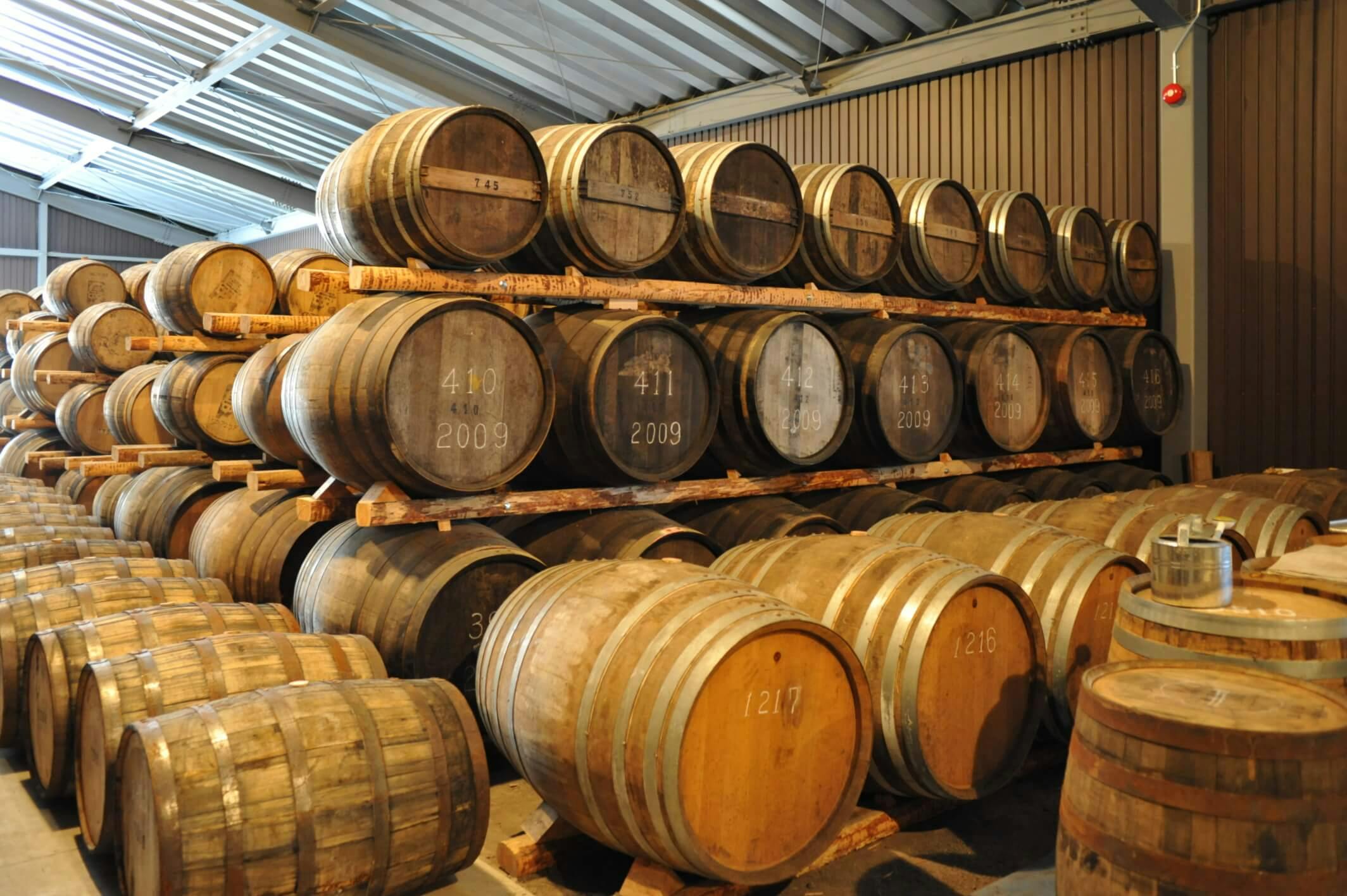
10. What is peated whisky?
Peat is used in the malting process of barley to impart a smoky character to whisky. It is a fossilized material resulting from the slow decomposition of earth and vegetation over thousands of years.
Once extracted and dried, peat can be burned, producing thick smoke rich in phenols, aromatic compounds that penetrate the barley and give the whisky its characteristic notes of smoke, earth, and even sea spray.
Peated whiskies, like many single malts from the Islay region in Scotland, offer a distinctly smoky and earthy flavor. Laphroaig, Kilchoman, and Caol Ila are particularly famous for their intensely peated whiskies.
To learn more about this topic, we have an article entirely dedicated to peat in whisky.
11. Can you visit a whisky distillery?
It is entirely possible to visit a whisky distillery. Many distilleries around the world offer guided tours that allow visitors to discover the whisky-making process, from malting to aging.
The tours can vary in duration and content, ranging from simple walks through the facilities to more in-depth experiences, including tasting workshops or educational sessions on the subtleties of whisky.
For example, the Warenghem distillery offers a workshop dedicated to blends, where the visitor becomes the master blender of their own whisky.

12. How to store whisky ?
Should you store the bottle horizontally or keep it upright? How long can you store an opened bottle of whisky?
These are important questions because whisky is enjoyed over time. Therefore, it is essential to follow a few simple rules to preserve all its qualities.
Before Opening
Once bottled, whisky changes very little in the bottle, unlike wine.
It can be stored almost indefinitely, provided that the cork is not defective and the bottle is properly sealed.
Also, be careful to store it away from light, as this will help preserve its flavors and color for a longer period.

Unlike wine, whisky should not be stored horizontally to avoid the alcohol damaging the cork and to limit the surface area exposed to the air inside the bottle, which leads to oxidation.
After Opening
Once opened, the bottle accumulates more air, which can lead to the oxidation of the whisky: the lower the level, the greater the chance that the characteristics of your whisky will be altered.
Therefore, do not leave your opened bottles for too long. To counter this phenomenon, you can transfer your whisky into smaller bottles to reduce the amount of air in the container.
By following these precautions, you can best preserve your whisky, whether opened or unopened, for several years.
13. What to eat with whisky
For a long time, the Irish have known how to pair their whiskies with smoked salmon, while the Scots enjoy theirs with their national dish, haggis (stuffed sheep's stomach).
There are also many recipes where whisky plays the role of an ingredient, whether in sauces or marinades.
These pairings are especially interesting for the whisky enthusiast, as they emphasize the aromatic profiles and distinctive characteristics of each single malt.
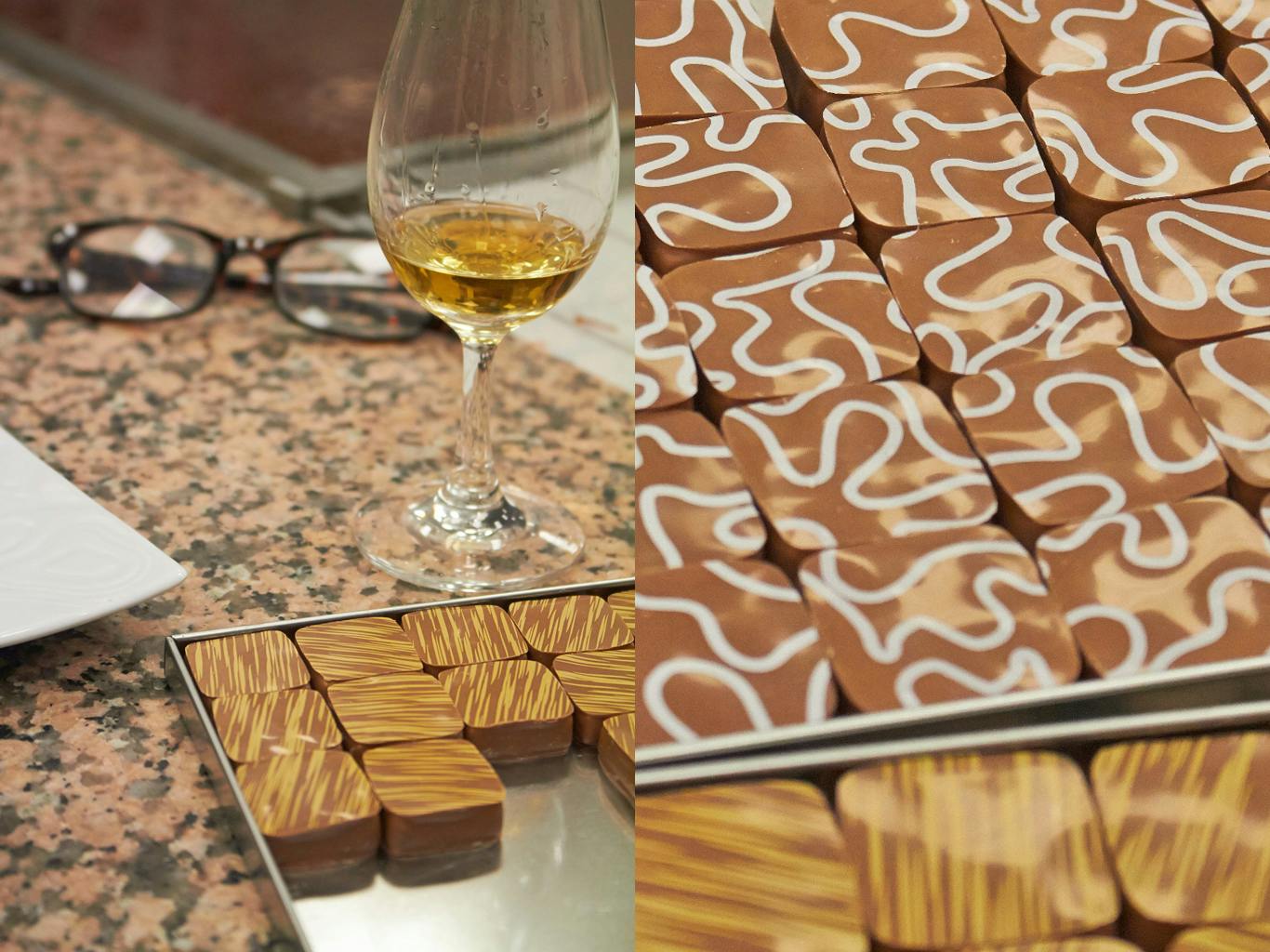
Thus, it is not always possible to substitute one single malt for another, and sometimes even one version for another, even when both come from the same distillery.
Food and Whisky Pairings
The most obvious pairings between single malts and dishes are inspired by the Scottish terroir.
Single malts from the Islay island, for example, where the marine influence is particularly notable, pair well with smoked fish and seafood.
For instance, we highly recommend trying to flambé your prawns or scallops with a Laphroaig or Bowmore.
TO EXPLORE WHISKIES FURTHER
La Maison du Whisky has three boutiques in Paris:
In each of these boutiques, you'll find a wide selection of whiskies, rums, sakes, and other fine spirits.
Because a whisky can be described in a thousand words, our experts will be delighted to guide you through the must-try whiskies at La Maison du Whisky.
Follow our tasting calendar for upcoming events, or visit the Golden Promise Whisky Bar, which offers an extensive selection of whiskies and other spirits by the glass.
Written by
- Quentin JEZEQUEL - SEO project manager at LMDW.
Verified by
- Didier GHORBANZADEH - Wine & Spirits Expert at LMDW
- Clotilde NOUAILHAT - Editorial and Corporate Communications Manager at LMDW